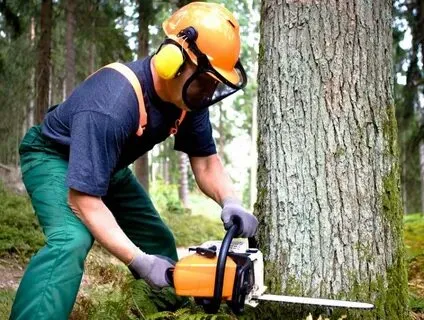Cutting down a tree is not as straightforward as it seems. While it may appear to be a simple decision for private property owners, various laws and regulations govern tree removal to protect the environment, preserve urban greenery, and maintain ecological balance. Before you proceed with cutting a tree, it is essential to understand what permissions are required, the legalities involved, and the possible consequences of unauthorized removal.
This article explores the details surrounding tree-cutting permissions, providing you with a comprehensive guide to navigate this process responsibly.
Why Are Permissions Needed to Cut a Tree?
Trees play a critical role in maintaining the ecological health of our planet. They provide oxygen, improve air quality, combat climate change, and offer habitats for various species. Removing a tree without understanding its broader environmental implications can disrupt local ecosystems and biodiversity.
To safeguard these benefits, many governments and local authorities have implemented laws and regulations that require individuals or organizations to obtain permission before cutting trees. These permissions are designed to regulate tree removal, protect endangered species, and ensure that deforestation is minimized.

When Do You Need Permission to Cut a Tree?
Trees on Private Property
While you may think that owning a piece of land gives you complete freedom to remove trees from it, this is not always the case. In many jurisdictions, local laws require property owners to obtain a permit even for trees on private property.
Factors influencing whether a permit is needed include:
- Tree size: Larger, older trees are often protected by law, as they take years to mature and contribute significantly to the ecosystem.
- Tree species: Some species are classified as endangered or protected, making it illegal to cut them down without special authorization.
- Location: Urban areas often have stricter regulations compared to rural areas to maintain greenery and reduce the urban heat island effect.
Trees in Public Spaces
Cutting down trees in public spaces such as parks, roadsides, or forests usually requires permission from government bodies or forestry departments. These tree removal cost per foot often fall under community or state ownership and are protected to benefit society at large.
Emergency Situations
There are exceptions where permission might not be required, such as:
- Hazardous trees: If a tree poses an immediate threat to life or property, you may be allowed to remove it without prior approval. However, you might need to report the removal afterward.
- Natural disasters: During storms, floods, or other natural calamities, trees that have fallen or are dangerously leaning can often be cleared without formal permissions.
How to Apply for Tree-Cutting Permission
Step 1: Check Local Laws
Begin by researching the specific tree-cutting laws in your area. These regulations are typically outlined by municipal councils, state governments, or forestry departments. Websites or local offices of these authorities often provide detailed guidelines.
Step 2: File an Application
Once you confirm that a permit is needed, you’ll need to submit an application. The process generally involves:
- Filling out a form with details about the tree(s) you intend to cut, including species, size, and location.
- Providing a valid reason for tree removal, such as property development, safety concerns, or disease.
- Paying an application fee, if required.
Step 3: Inspection by Authorities
After submitting your application, an authorized official may visit the site to inspect the tree and assess the necessity of removal. They will evaluate factors such as the tree’s health, environmental impact, and potential risks.
Step 4: Approval or Rejection
Based on the inspection, authorities will either approve or reject your application. If approved, you will receive a permit with specific conditions for tree removal. For instance, you may be required to plant new trees as compensation.
Consequences of Cutting a Tree Without Permission
Unauthorized tree removal can lead to serious consequences, including:
- Fines: Violating tree-cutting laws can result in hefty penalties, which vary depending on the severity of the offense and local regulations.
- Legal action: In some cases, you could face legal proceedings, leading to additional costs and complications.
- Environmental impact: Unregulated tree removal can contribute to deforestation, soil erosion, and loss of biodiversity, impacting the community and environment.
Special Cases: Trees Protected by Law
Heritage and Protected Trees
Certain trees are classified as heritage or protected due to their age, historical significance, or ecological value. Removing such trees often requires approval from higher authorities, and permits may be harder to obtain.
Forest Areas
Cutting trees in forested regions typically falls under the jurisdiction of forestry departments. These areas are governed by stringent laws to prevent illegal logging and deforestation. Special permits are needed, and the process is often more complex.
Wildlife Protection
If the tree in question serves as a habitat for protected wildlife, additional permissions from environmental or wildlife protection agencies may be required. Removing such trees without authorization could lead to severe legal consequences.
Alternatives to Tree Cutting
Before resorting to cutting a tree, consider alternatives that could address your concerns while preserving the environment:
- Pruning: Trimming overgrown branches can solve issues related to safety or aesthetics without removing the entire tree.
- Relocation: If feasible, the tree can be transplanted to a different location instead of being cut down.
- Preservation: Seek expert advice to treat diseased trees or mitigate risks without removal.
Conclusión
Cutting down a tree is a significant decision that requires careful consideration of environmental, legal, and societal factors. Obtaining the necessary permissions ensures compliance with local laws and promotes responsible stewardship of our natural resources.
Whether you’re a homeowner, developer, or concerned citizen, understanding the regulations surrounding tree removal is crucial to avoid fines, protect biodiversity, and maintain ecological balance. Always explore alternatives and consult with local authorities before taking any action to ensure that your decision aligns with both legal requirements and environmental priorities.
